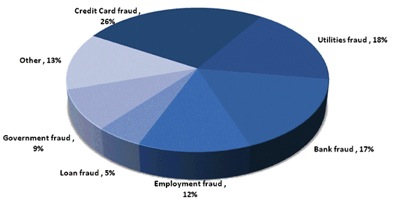
Identity Theft
Identity theft is the criminal act of impersonating the identity of others in order to commit fraudulent activities. Since the increase in popularity of online personal home pages, thousands of people across the world have openly shared their personal information such as full names, date of birth, and addresses on social networking websites such as Facebook, Myspace and Twitter, which many people are unaware that it creates a gateway to potential identity theft. Social networking websites have made it easier for identity thieves to steal personal information about individuals and commit fraudulent activities using other peoples I.D. Instances of identity theft have been increasing at a steady rate. In November 2009, Javelin Strategy & Research, a California based research firm, conducted a survey to thousands of consumers across North America to track statistics on the victims of identity theft. Studies have shown that in 2008 almost 10 millions victims were affected by some form of online identity theft, which was a 22% increase from 2007 (Javelin Strategy & Research Center, 2009). The increase in popularity of social networking websites has made it easier for hackers to obtain enough information from users and use it to assume your I.D and ruin your reputation (CityNews, Toronto). Identity theft comes in various forms such as government fraud, loan fraud, credit card fraud, employment fraud, and even just someone out to ruin your public image. The most common form of online identity theft is credit card fraud. Hackers often search online to obtain credit card numbers and use them to make purchases. They often use spam mail or advertisements to lure online users in giving out their credit card information. Over 26% of all identity theft cases in 2008 were victims of credit card fraud (Javelin Strategy & Research Center, 2009). In 2009 alone, costs for identity theft grossed into a loss of over 54 billion dollars (L.Barret, 2010). Identity theft is on high alert but "The good news is consumers are getting more aggressive in monitoring, detecting, and preventing fraud with the help of technology and partnerships with financial institutions, government agencies, and resolution services" (James Vane Dyke, 2010).

http://www.spendonlife.com/guide/2009-identity-theft-statistics